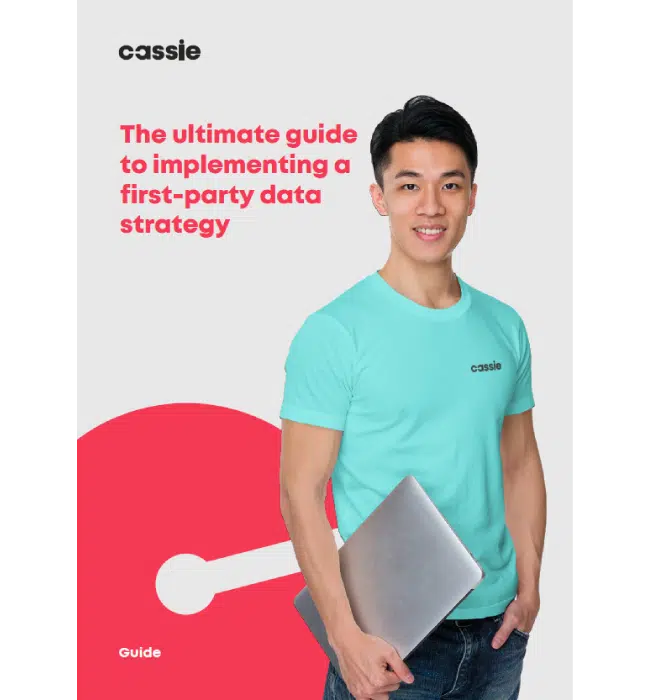Using first-party data to drive personalized experiences
Posted: June 21, 2023
The future of personalized digital experiences lies in the hands of first-party data strategies. This type of data collection is considered to be the most privacy-centric and trustworthy source for consumer data due to the value exchange between a business and user.
With third-party or second-party data sources, it can be difficult for consumers to understand where or how brands obtained their data, which creates a potential risk for negative brand impact.
On the other hand, when a user consciously chooses to give their data to a business that has been transparent about its use, they will expect something advantageous in return.
Therefore, businesses should take advantage of first-party data strategies in order to provide consumers with an enriched experience that is both secure and beneficial.
- 7 ways you can create personalized experiences with first-party data
- Getting customer personalization wrong can have a major impact on your business
- Why personalization is so important to marketing teams
- Want to enhance your marketing efforts and gain a competitive edge?
- The ultimate guide to implementing a first-party data strategy
7 ways you can create personalized experiences with first-party data
Marketing teams that leverage first-party data can create highly personalized customer experiences.
Here are some ways to drive such personalization:
1. Target audiences with relevant content
Leverage the data collected on customers’ past purchases, interests, and behaviors to provide them with tailored messages and offers. This enables marketers to ensure they’re sending out content that resonates with target audiences.
2. Personalize emails
Utilize first-party data to craft emails that properly address customers by name or mention products they may be interested in based on their previous searches or orders. This helps foster further engagement levels from recipients, showing you know who they are and what matters most to them.
3. Improve online experiences
Utilizing first-party data can help create an improved online experience for customers by allowing marketers to develop a more tailored site design and interface. For example, based on the data you’ve collected from customers, you can offer personalized recommendations or highlight products they’ve shown interest in during past visits.
4. Enhance customer service
Use first-party data to provide faster and more effective service to customers by offering self-service options that are tailored to their needs. By understanding each customer’s individual preferences and history, you’ll be able to generate automated responses that better meet their needs.
5. Automate cross-selling and upsells
Leverage the data you have collected from customers’ past purchases, interests, and behaviors to make product recommendations that will be interesting for them.
6. Improve AB testing success
With the help of first-party data, you can optimize your A/B tests more effectively as you will be able to properly target certain audiences with specific messages or offers.
7. Create personalization for social media ads
Use first-party data when targeting users through social media advertising. This helps ensure your ads reach the right audience at the right time by delivering relevant content tailored specifically for them based on what you know about them from previous interactions and engagements with your brand.
Getting customer personalization wrong can have a major impact on your business
Customers increasingly expect personalized experiences, and when their expectations are unmet, they will take their business elsewhere. According to research from McKinsey, “71% of consumers expect companies to deliver personalized interactions, and 76% get frustrated when this doesn’t happen.”
Personalization errors could lead to companies losing out on sales opportunities, damaging relationships with customers and tarnishing the brand’s overall reputation.
Over-personalization can also lead to customers feeling overwhelmed by the amount of information they are receiving, leading them to unsubscribe from emails or opt-out of promotional campaigns.
That’s why it’s imperative that businesses compliantly gather and manage consent, while providing customers with options to manage their preferences in terms of how they’re communicated with.
Why personalization is so important to marketing teams
Creating personalized customer experiences is essential for marketing teams to stay competitive and drive growth. It enables them to identify, understand, and engage customers on an individual level.
By leveraging first-party data insights, marketers can create engaging content that resonates with their target audiences. This will help foster loyalty and increase customer satisfaction while also allowing them to tailor campaigns towards specific personas.
Furthermore, personalization can allow marketers to test different strategies and refine their approach over time as they gain further insight into customer preferences.
Ultimately, providing personalized experiences will help businesses stand out amongst competitors and provide a more seamless journey for customers throughout the entire purchase lifecycle.
Want to enhance your marketing efforts and gain a competitive edge?
A first-party data strategy is essential for any business looking to improve their marketing efforts and gain a competitive edge. With the right approach, companies can use customer data to build more effective campaigns that target specific audiences and increase conversions.

The ultimate guide to implementing a first-party data strategy
Read our comprehensive free resource that covers the fundamentals of first-party data collection, data privacy considerations, tools and technologies, and step-by-step guidance for implementation.

